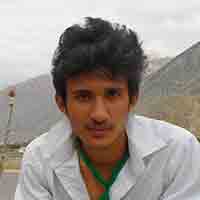 I recently did a PubMed search for Nepal, and I found thousands of articles that had been published in different journals across the world. This was a happy moment for me. I carried on searching and found that thousands of articles had been published over recent decades. I pondered for a while, thinking about how health services research has been burgeoning over time in developing countries like Nepal. I feel that it is a matter of international prestige and recognition. I asked myself “Why is health services research growing more than ever? Does more research mean more development? What challenges is Nepal facing to extend health services research?
I recently did a PubMed search for Nepal, and I found thousands of articles that had been published in different journals across the world. This was a happy moment for me. I carried on searching and found that thousands of articles had been published over recent decades. I pondered for a while, thinking about how health services research has been burgeoning over time in developing countries like Nepal. I feel that it is a matter of international prestige and recognition. I asked myself “Why is health services research growing more than ever? Does more research mean more development? What challenges is Nepal facing to extend health services research?
A decade ago, research was a relatively new discipline in Nepal. But I am certain that nowadays, it has captured everyone’s attention, including students, academics, health professionals, and institutions, in most of the developing countries including Nepal. Students’ research has been gaining momentum for few years. It is exemplary that Nepal has been advancing despite difficulties. Nevertheless, many hurdles still need to be overcome. The recent advancement in health research in Nepal highlights the government’s increasing focus on evidence based recording and reporting of health statistics. Partly, this development could be attributed to an increased awareness of the importance of health services research for students’ and health professionals’ careers. The importance of health and policy research in the development of the country has lately been addressed in all sectors.
It’s bizarre that national reports produced by the government often lack reliable and high quality data on several health issues in the country. Healthcare planning is often based on questionnaire based surveys, whose validity might misinform health planners and policy makers. Qualitative studies are scant. In most cases, data are incomplete and extrapolated—the relevance, reliability, and validity of which may be the subject of debate.
The numbers of academic health institutions across the country are growing. This, of course, means more investment in the health sector. However, none of the institutions is able to subscribe to international health and medical journals because of expensive subscriptions, which are a burden for most of the developing and least developed countries. Mandatory research in all medical and paramedical curriculums is still lacking. Moreover, poor funding and limited institutional infrastructures further limit researchers from expanding the knowledge pool. Many academic institutions lack a research department, and institutional review boards (IRBs) in academic institutions are limited. Academic institutions often don’t monitor research conducted by scholars, which could potentially lead to research malpractice and a credibility gap.
The number of local research journals in the health sector is rising in Nepal. This has helped to promote research among students. However, several challenges persist—such as regular and timely publication, poor scientific process, and technological difficulties. NepJol, a database of Nepalese journals, provides full text access to articles published in different scientific journals from Nepal. SCImago journal and country rank [http://www.scimagojr.com/] ranked Nepal 93rd in the world in terms of scientific output. There is still a lot to do.
Research should be viewed as an investment rather than expenditure. Consolidating the existing research infrastructure, incorporating students’ research into the overall national research infrastructure, practical education based learning, compulsory research in the medical and paramedical curriculum, incentives and grants, and making a community research project mandatory for students might be helpful in further strengthening the health research system in Nepal.
Kiran Thapa is a public health student at the Institute of Medicine, Maharajgunj, Kathmandu, Nepal.
Competing interests: None declared.